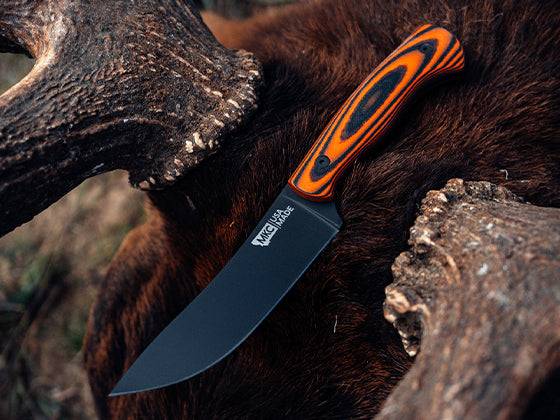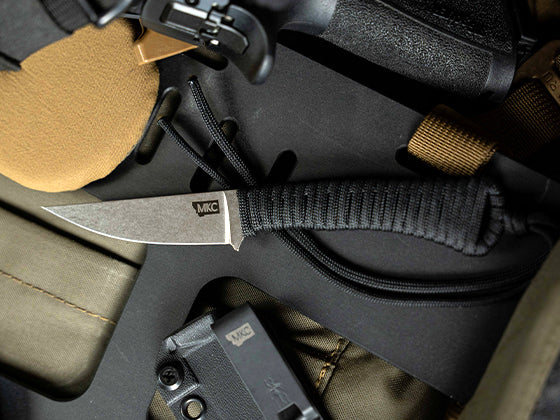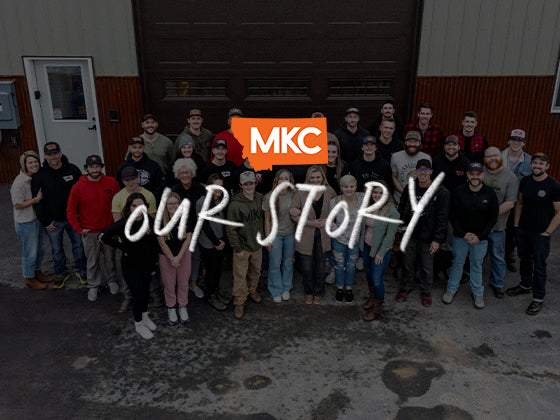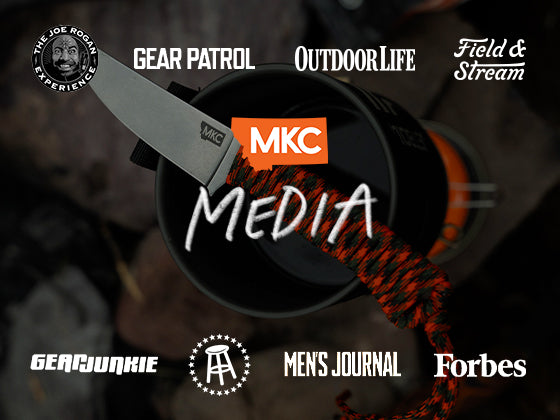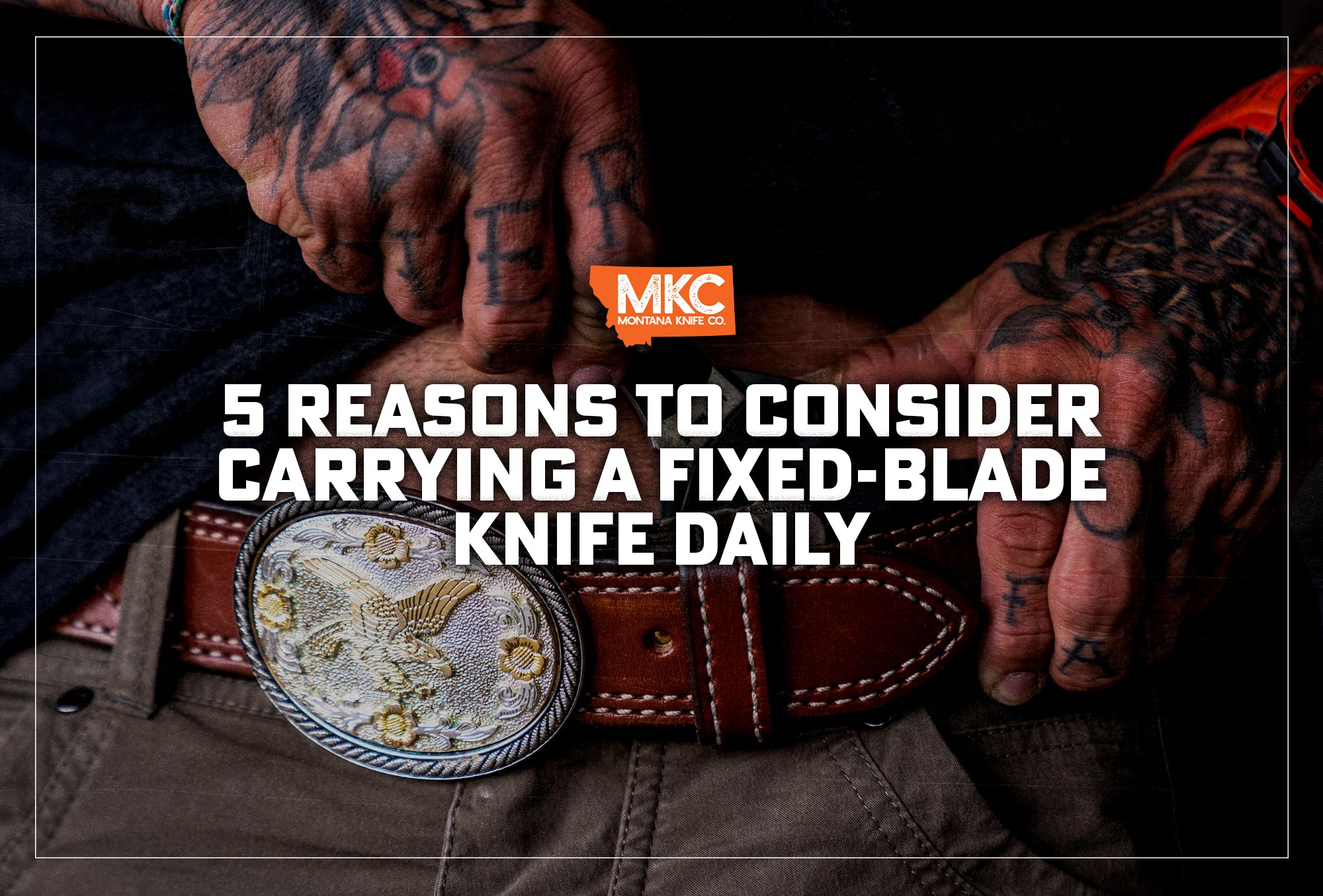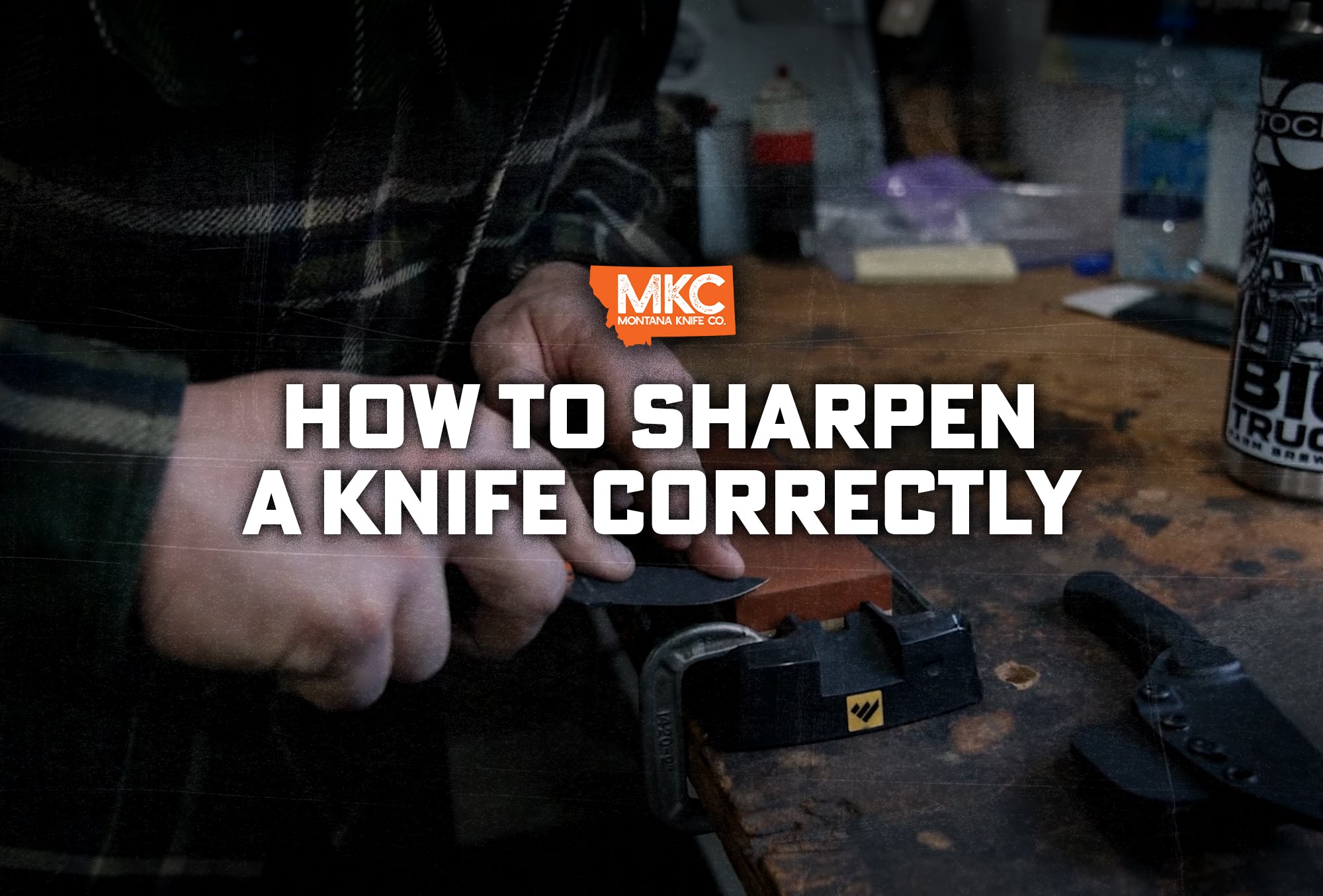MagnaCut steel was born out of a passion for both steel and knives. It's a steel designed specifically for knives, combining a high degree of toughness and wear resistance in a balance no other stainless steel quite achieves.
Montana Knife Company uses MagnaCut steel for many of our blades because of this exceptional balance. In today's blog post, we're going to do something a little different. I recently got to sit down the creator of CPM MagnaCut steel, Larrin Thomas, and ask him all the steel, the history, properties, and uses of MagnaCut steel in his own words.
So let's dive in.
What is your background? How’d you get into the knife making world?
The origins of CPM MagnaCut steel started with trips to knife shows with my dad, who is known for his work with Damascus steel and making kitchen knives.
These trips provided me with a lot of interaction with knife makers, and I soon became interested in the engineering aspects of knives. Knife makers would say they had “secret” steel, “better” steel, and “special” heat treatments that led to better steel properties than other knife makers. Intrigued, I started studying how steel was made.
The interest never waned, eventually leading to a PhD in metallurgical engineering and work as a steel metallurgist. As a hobby, I started writing about knife steel and doing knife steel experiments.
What is CPM MagnaCut Steel and how was it developed?
My experiments led to a new idea for knife steel. Typically, when you increase the wear resistance of steel, you lose some toughness, and vice versa. But when I plotted out toughness versus wear resistance for all existing stainless steels, I found a big hole in the chart. There was room for something better, and I had an idea about a new kind of steel to fill that hole in the market.
I contacted Crucible Steel, who makes a lot of the common knife steels, like S30V, S35VN, S45VN, S90V, 10V, CPM Cru-Wear, etc., and Niagara, who hot rolls and distributes Crucible's knife steels, and told them about my idea.
They had a lot of questions. To demonstrate why I thought this new steel would work, I provided them with my experimental information and various models to predict how the properties would behave. But you never really know if a new development will work until you try it. There are always surprises, and it often needs tweaking along the way to get it right.
Personally, my biggest concern was that these companies would make 5,000 pounds of steel that turned out to be a failure, coming nowhere close to what I predicted, and everyone would move on.
Fortunately, that didn't happen. MagnaCut came out of its first heat working exactly as predicted. We sent it to various knife makers to try out, and I ran it through my series of tests for corrosion resistance, toughness, hardness, and wear resistance. It met every property target, and had one big surprise for us: The corrosion resistance was actually much better than expected.
What makes CPM MagnaCut steel different from other stainless steels?
To really understand what makes MagnaCut steel unique, we have to get pretty specific. So get ready for all the nerdy details.
The main difference between CPM MagnaCut steel and other stainless steels is the amount of chromium. Stainless steels contain added chromium to increase their corrosion resistance. Knife steels typically have between 14 and 20% chromium, but not all of that chromium helps with corrosion resistance. To prevent corrosion, chromium has to be floating free in the steel matrix, mixed in with the iron atoms.
Normally, the iron atoms in steel react with oxygen at the knife's surface to form iron oxide, or rust. This rust layer then flakes away, exposing more iron to more oxygen, resulting in ever-increasing corrosion and rust.
But when chromium atoms meet oxygen on a knife's surface, they form chromium oxide instead of rust. This chromium oxide layer is stronger and doesn't flake away like iron oxide. That's what makes stainless steel stainless.
The trouble with the high-carbon stainless steels used in knives is that the abundant carbon atoms react with the extra chromium to make chromium carbide. Once chromium combines with carbon to make carbide, it's no longer available to react with oxygen at the surface to form that protective chromium oxide layer and keep corrosion at bay.
So a high-carbon steel with 14–20% chromium really only has about 9–13% chromium available, or in solution, to react with oxygen.
My idea was to reduce the chromium content down to the actual chromium we needed in solution, about 11% — right in the middle of that 9–13% — and then adjust the rest of the composition, especially the carbon, to make sure we didn't have extra chromium carbides after heat treatment.
Carbides aren't altogether detrimental. They're hard particles, much harder than the steel itself, that actually improve wear resistance. But chromium carbide isn't the only carbide type, so we weren't worried about reducing the amount of carbide-producing chromium in the steel. In the case of MagnaCut, we instead use vanadium and niobium carbide, which are harder than chromium carbide and provide even better wear resistance.
Making a new knife steel was a game of balancing the properties we wanted. Steel with more carbides has higher wear resistance but lower toughness. A small amount of harder carbides, however, gets you a combination of better wear resistance and increased toughness.
Some steels go very high on chromium content trying to achieve better corrosion resistance, but I only targeted an average amount of chromium in solution for MagnaCut steel. Surprisingly, this is what led to better corrosion resistance than expected.
The lack of chromium carbide didn't just improve the toughness-wear resistance balance, but the corrosion resistance as well. When chromium carbides from, they absorb the surrounding free chromium in the steel. So even though the average chromium in solution is still good enough to be stainless, localized areas around chromium carbides have lower free chromium and can act as easy sites for corrosion to start. MagnaCut knives don't have those low-chromium spots, meaning higher corrosion resistance for a given amount of chromium.
I love walking through the technical aspects of steel, and my job with the Knife Steel Nerds website is all about science, engineering, and metallurgy communication. If you want to learn more about CPM MagnaCut or other knife steels, check it out to learn more.

What do you recommend for Rockwell hardness, edge geometry, and sharpening?
People sometimes ask for recommendations on Rockwell hardness and edge geometry for MagnaCut knives, but really, it depends on you and how you're going to use your knife.
Anywhere between 59 and 64 on the Rockwell hardness scale can work great, and MagnaCut steel can be heat-treated to a range of hardnesses depending on the application. I know some out there give specific hardness targets they think are ideal, or claim a knife is no good below a certain hardness. But I feel that ignores the balance of properties you get at different hardness points.
In terms of specific edge thickness or edge angle, that's very individual to what you're doing with your knife. My best recommendation here is to have fun trying different edge angles for your purpose.
One thing knife enthusiasts can do is to go with a more acute angle that's going to cut a lot better. If you find you're starting to get some micro-chipping, then back off on that angle some, and you've found the sweet spot for exactly how you like to use and sharpen your knife.
What’s your opinion on CPM MagnaCut steel vs. 52100 steel?
Montana Knife Company has both 52100 knives and MagnaCut knives. 52100 steel has a little more toughness than MagnaCut steel, and MagnaCut has more wear resistance because of those harder vanadium and niobium carbides.
People sometimes find more wear-resistant steels a little more difficult to sharpen because you have to abrade away steel during sharpening, which is controlled in part by wear resistance.
Fortunately, if you have a nice thin edge, like on a high-quality Montana Knife Company knife, there's not too much to abrade away, so it's not a significant factor. As a rule, carbon steel knives are a little tougher and easier to sharpen, and MagnaCut knives are a little more wear resistant and corrosion resistant.
MagnaCut is wear resistant to a high degree, and it's also pretty easy to resharpen. But some customers want something tougher, like 52100. It's not that one is better than the other; it's a matter of what you need from your knife.
Engineering always has tradeoffs, and they don't mean you have to say one thing is better than another. You wouldn't test a Ford F-250, for example, against a Formula One racer on the track. And you wouldn't hook up a Formula One to a trailer to see how much it can tow. They're designed very differently, and they'll excel in different areas.
What we've managed to do with MagnaCut is balance trade-offs. CPM MagnaCut has shifted wear resistance upward compared to previous stainless steels, while improving corrosion resistance and achieving the toughness of a carbon steel. That's the hole we saw — and filled — in the market.
What else should people know about you and MagnaCut?
Attending knife shows the past few years since the announcement of MagnaCut has been fun. People are excited about MagnaCut steel's properties, and they want MagnaCut knives. They're enthusiastic about meeting a metallurgist who specifically cares about the knife market.
That's what excites me. I wanted to improve knife steel properties through better design to give customers what they're looking for. And based on the feedback from knife companies and end users, I think CPM MagnaCut does that.
Thinking back to my younger years at knife shows, I remember all those knife makers with their secret steels. Now I have my own steel, and I'm thrilled to see it spreading throughout the knife community.
By Larrin Thomas, a Knife Steel Metallurgist and Founder of Knife Steel Nerds
























